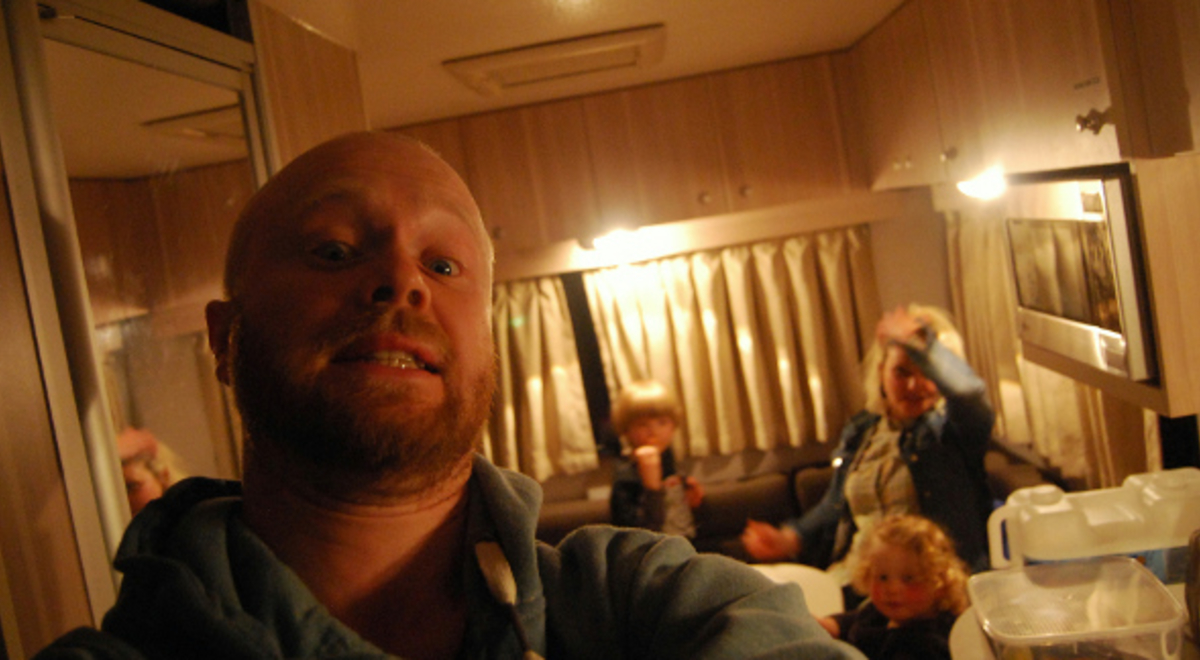Heading out of inner-city Sydney in our enormous camper, the roads narrow, the sweat forms on my brow and I ask myself what on earth I’m doing driving this 7.9-metre beast.
We – two adults and our two small children – are heading for the red dirt; specifically, the remote north-west of New South Wales, which travellers both Australian and foreign opt to pass on in favour of Uluru/Alice Springs or the Kimberley region of Western Australia when seeking an outback “experience”.
We’re reasonably keen campers but when the offer of a van materialises from Apollo campers, the thought of not having to put the tent up each night is quite exciting.
Don't Try To Reverse This Thing Without A Guide
Inside, the Euro camper feels fairly roomy, at least before we unpack our bags. There are two table and chair areas, both of which become a double bed. There’s also a bed above the cabin, which, unsurprisingly, our five-year-old favours.
The straps that need to be put up to stop kids (or adults) rolling out make it a bit of a pain when our two-year-old cries in the night, however, and we all switch beds a few times.
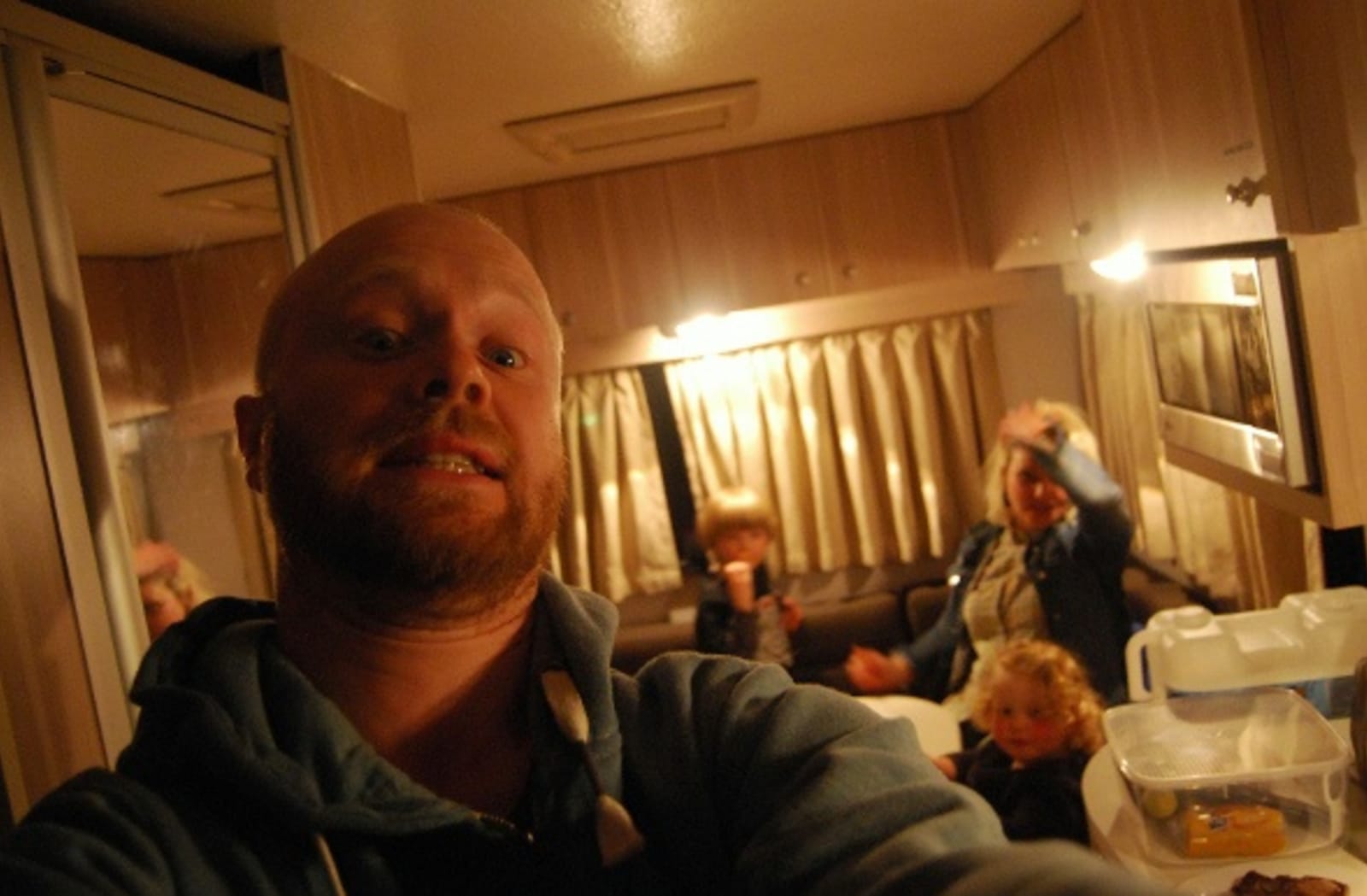


Meals with children in an enclosed space can be challenging (Image: Bill Code for The Guardian)
There’s a gas-stove equipped kitchen with the basic utensils, a TV-DVD player, and a shower and toilet. More on that later.
We arrive in Dubbo – home of the Western Plains zoo – a good eight hours later thanks to my cautious driving and the constant requirements of small children.
I can’t really see anything behind me when I’m driving such a large van and it’s a little unnerving. There’s a reversing camera but, be warned, try to reverse this thing without a guide and you’re asking for trouble.
I drive with the camera on when we’re in towns but it doesn’t help a great deal. It’s not designed for forward driving, even if it does reassure me a little.
Bush Biking Makes Ours A Special Day
In Dubbo we stay at the BIG4 campground, where a night on a powered site for a van like ours costs $57 for the family.
In the morning the kids fall in love with the play equipment and bouncing pillow – think bouncy castle minus the walls.
The setting is convenient, almost within shouting distance of the free-range zoo, even if the piped (and loud) commercial radio in the bathrooms, coupled with the replica suburban streets is, for the purposes of our city escape, not ideal.
At the zoo, the kids have been sold on a drive-through safari in which lions claw at the car. In the end we rent bikes with trailers ($40 for a bike and a “bike-n-tow” on top of the two-day $131.40 family ticket) and make our way through the vast setting, catching the usual big favourites; an energetic tiger, giraffes and elephants standing out for the kids.
Biking through the bush makes it a special day. It’s the most kid-friendly thing we have planned so it’s a relief when it gets the thumbs up from our five-year-old.
Ancient History Etched In The Outcrops
That afternoon we join a large group of “grey nomads” at the free Terramungamine campsite just outside Dubbo. Here, evidence of the clans that called – and still call – this land home is etched into the outcrops along the river in rocks used for tool sharpening.
Dozens of deep grooves from ancient tools are visible.
As the light fades I sit on the riverbank, the kids flop out to some Dora the Explorer on the van’s TV (this is a grown-up’s holiday, too), and what seems like hundreds of sulphur-crested cockatoos, galahs and corellas make their way along the river, jostling for a roosting place high up in the sturdy red gums.
In the morning, black cockatoos soar high above the campsite.
We follow the highway north, taking in the faded charm of towns including Gilgandra and Coonamble, the rugged beauty of the Warrumbungles, and the beginning of the great, flat plains of NSW’s north-west.
Time To Ban The Toilet
Pulling in at Walgett, we’re a world away from Sydney and we’re reminded of the diversity – physical, social and economic – of this state. We stock up on supplies at the supermarket, the tyranny of distance evident in the high prices locals must pay for staples.
Walgett is the first town where the toilet “cassette” needs emptying (in an approved dump spot, of course), and it must be said it’s a repulsive job.
We’d been mulling an outright toilet ban owing to the unsavoury smell emanating from the little cupboard of yuck, pondering what it would be like in an outback summer. After Walgett we vow not to use the toilet again.



The Brewarrina rust belt (Image: Bill Code for The Guardian)
On the road again we note that the long-running drought in this country has eased and heavy rains have turned the land from shades of yellow and ochre – at Brewarrina, you start to get that sense of “outback” so often defined in the popular consciousness by the presence of the red soils – to the luscious greens of fresh grasses.
There's spectacular rock art close to the city. Indigenous Rock Art On Sydney’s Doorstep
Aussie farm stays are perfect for kids. Seven Top Aussie Farm Stays
Gangly Birds At The Side Of The Road
The land is now in bloom with yellow flowers. With a dead straight road shimmering ahead, a deep blue sky and flashes of iron-rich earth, it’s a beautiful scene.
We stop to admire a flock of emus and the kids strain their necks – while it’s fun for them to sit at a table while we travel, the windows of the camper are too high and a bit small for little ones to get a good view. They unbuckle to check out the gangly birds at the side of the road.
Brewarrina, with a population of just over a thousand, is not a typical holiday destination. It’s clear there are problems of crime, disadvantage, drug abuse and broken families (that’s what has brought me here before for work as a film-maker).



Still water at Barwon (Image: Bill Code for The Guardian)
But in remote indigenous communities people face the same struggles. It’s something visitors to the outback must contend with and, hopefully, learn from.
The people of Brewarrina and other places, after all, are guardians of a remarkable cultural heritage which enriches the whole nation. So what if there are a few dumped cars around?
Mass tourism is a long way off. But just outside of town the new Beds on the Barwon has the edge on competitors should the numbers of visitors seeking cabins and a lovely campsite pick up.
It Must Be The World's Most Peaceful Place
It’s $30 for a powered site ($20 unpowered) on the river, and there’s only one other couple camping here when we pull in. As the golden light of the sunset makes its way through the gums and another chorus of outback birdsong fills the air, we gather wood for a campfire, confident this is the most peaceful place in the world.
Two-year-old Rosa throws a huge tantrum before bed, momentarily breaking the serenity.
With two kids, the van is now a rubbish tip. There are quite a few cupboards but books, colouring pencils and socks are strewn across the floor – so it’s a bit like home.
The grown-ups are fraying at the edges but it’s easy to get some space by taking a breather outside. In wet weather I’m not sure this would be doable.
At night our son, Frankie, and I play with a smartphone app to make sense of the staggering numbers of stars above. Out here you see more than constellations; with the milky way tearing across the heavens, huge patches of cloudy light and dark are visible: we make out the emu known to holders of indigenous sky knowledge.
Over breakfast a feral goat makes its way along the opposite side of the river, followed by a kayaker. He says the goat has been showing him the way for the past two kilometres. He’s paddling from Goondiwindi in Queensland to Wentworth, where the Darling river meets the Murray, a distance, he reckons, of 2,000 kilometres.
Echoes Of A Distant Lifetime
I pledge to do something similar, one day, but before that take a hard-earned doze by the river as the kids have their afternoon nap, spying an eagle, a kite (I think), pelicans and what look to be budgerigars.
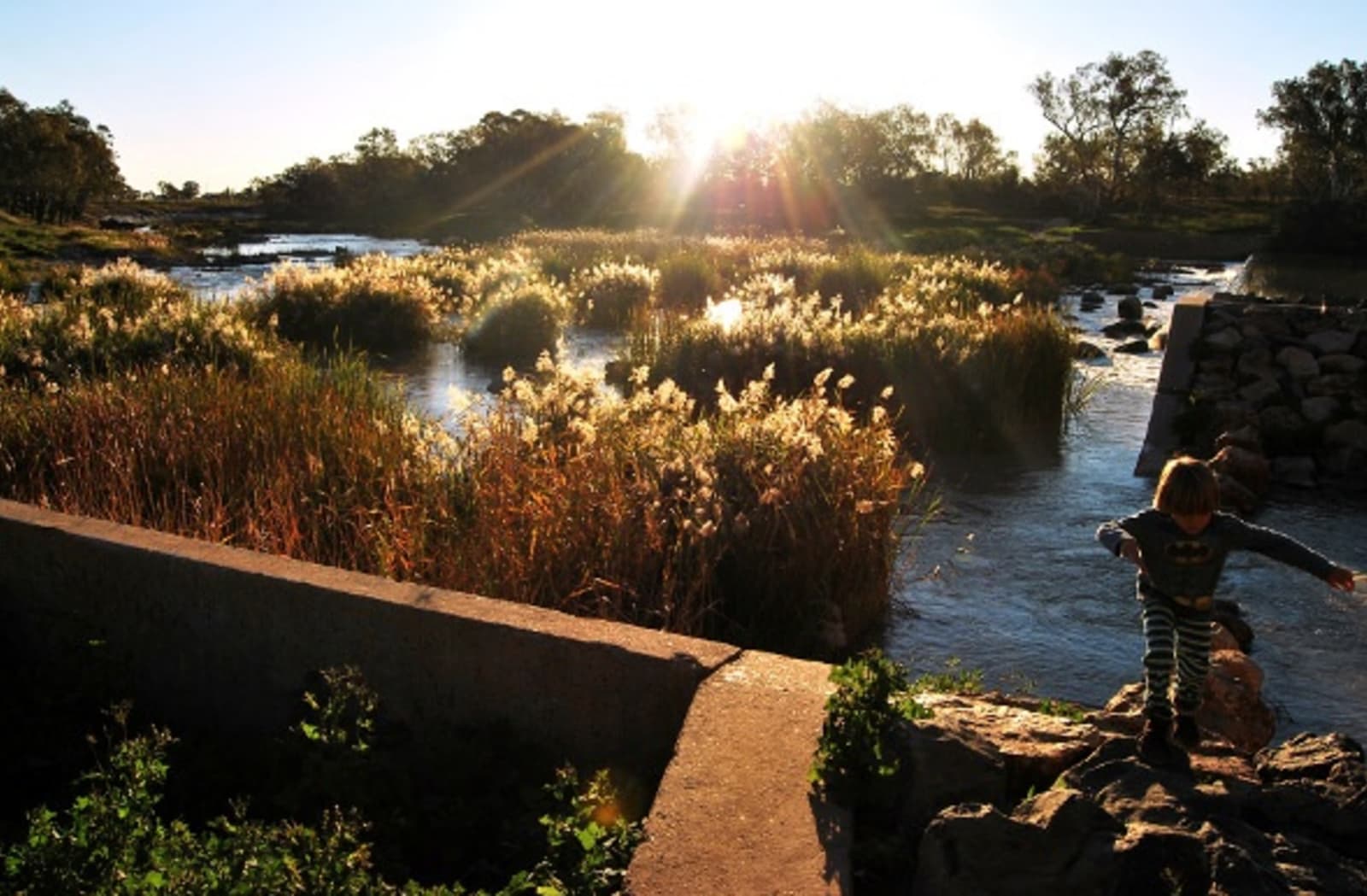


The fish traps are a reminder of this ancient culture (Image: Bill Code for The Guardian)
At dusk it’s time to visit the Brewarrina fish traps. Created by the Ngemba people millennia ago, they are a solid reminder the area was an important cultural centre long before the arrival of Europeans.
Neglect and downright destruction mean it’s hard to make out what is what alongside the modern weir and the clever fish “ladder” that has been built to let fish return upstream. But the river’s looking healthy and there are scores of reeds giving the place a nice feel.
We chat to some friendly drinkers on the bank who try to help us make sense of it.
After a morning catching up with friends, we head for Gundabooka national park, via Bourke.
We know we’ll have enough food, water and, hopefully, battery power for Dora the Explorer, but we get a rude awakening in Bre. The car won’t start. Two elders help us give the beast a push start, thank you very much.
Our friends seem worried the city people don’t know what they’re doing. They’re probably right, but by the time we get to Bourke the battery appears to have been re-energised.
People, Emus And Patterns Drawn In A Different Time
We check out the port, a few old buildings, note the number of brand names and companies with “Back o’ Bourke” in the title, and get on our way. It’s worth a stop (in the outback, everywhere is worth a stop), but there’s not much to keep us in what has become a tight itinerary.
About 50 kilometres south of Bourke we put the pedal to the metal; despite the fear of battery trouble it’s time to veer off the highway and take on more than 20 kilometres of dirt track to one of the campsites at Mount Gundabooka.
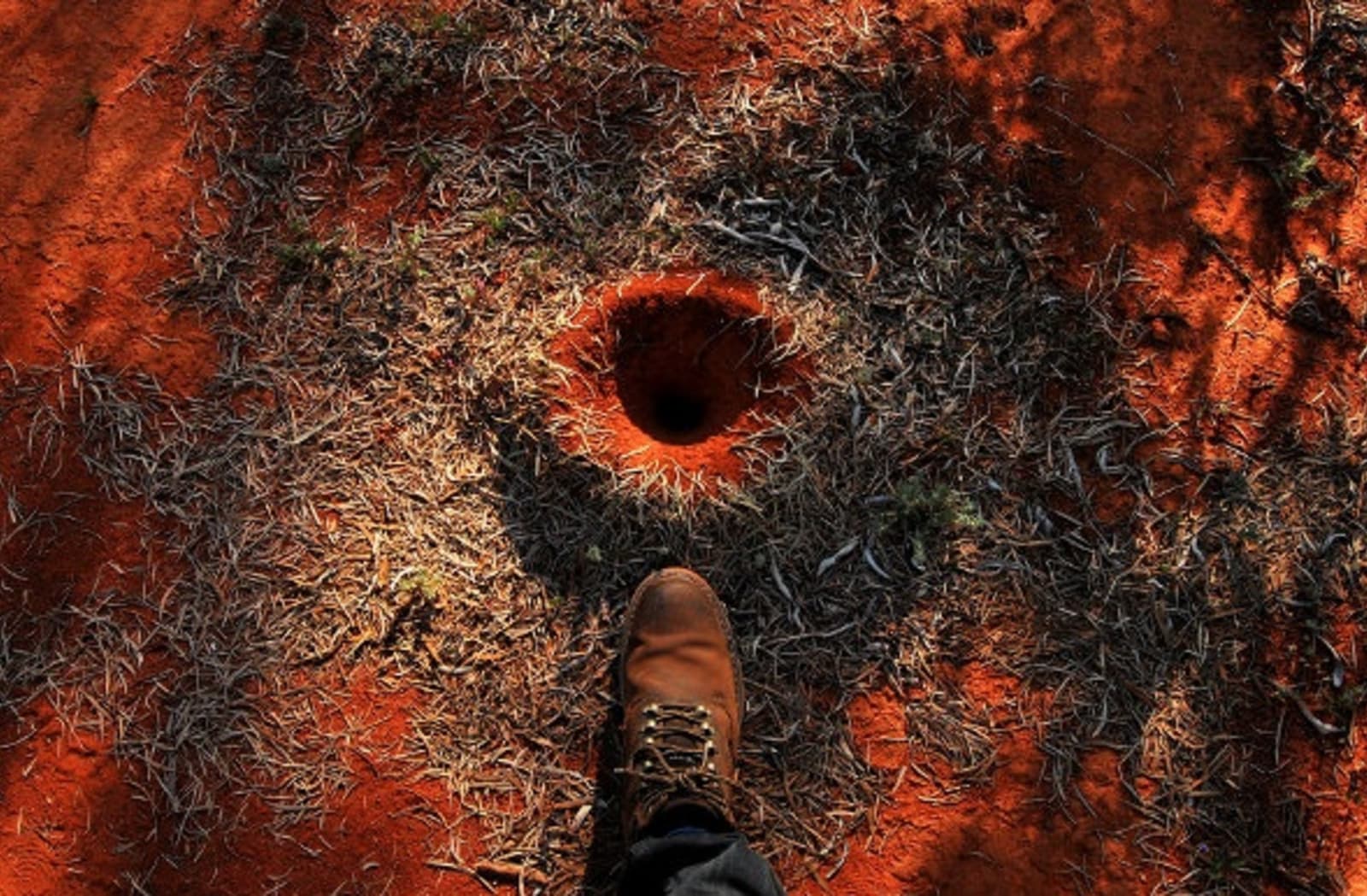


Scientists think the ants build levees to prevent flooding in heavy rainfall (Image: Bill Code for The Guardian)
If we thought camping in Brewarrina was peaceful, this is ridiculous. I walk away from the fire at night, as far as I dare in the dark silence.
It’s so quiet that the ringing in my ears is almost overwhelming. An owl is calling from what could be several kilometres away. The stars, again, are astounding.
In the morning we walk to the top of Little Mountain through the mulga scrub, a view of Mount Gundabooka and the surrounding flats the reward.
I note with some relief there is Telstra coverage should the van not start. It does, and we head for one of the two Ngemba rock art sites in the park. It’s another long red-dirt track to get here, followed by a 15-minute walk into a rocky valley.
There’s still water in the creek; large tadpoles are crowding each other out in the remaining waterholes. The art blows us all away; simple figures of people, emus and other patterns drawn in a different time.
Golden Sunset Stretches As Far As We Can See
Before the epic push back to Sydney, we pause in the historical mining town of Cobar to make the kids some dinner.
After numerous stops to admire our country’s rich indigenous heritage and long, long history, here’s a tourist attraction at the other end of the scale. We peer deep into the earth of the huge open-cut goldmine, a strange but intriguing sight.
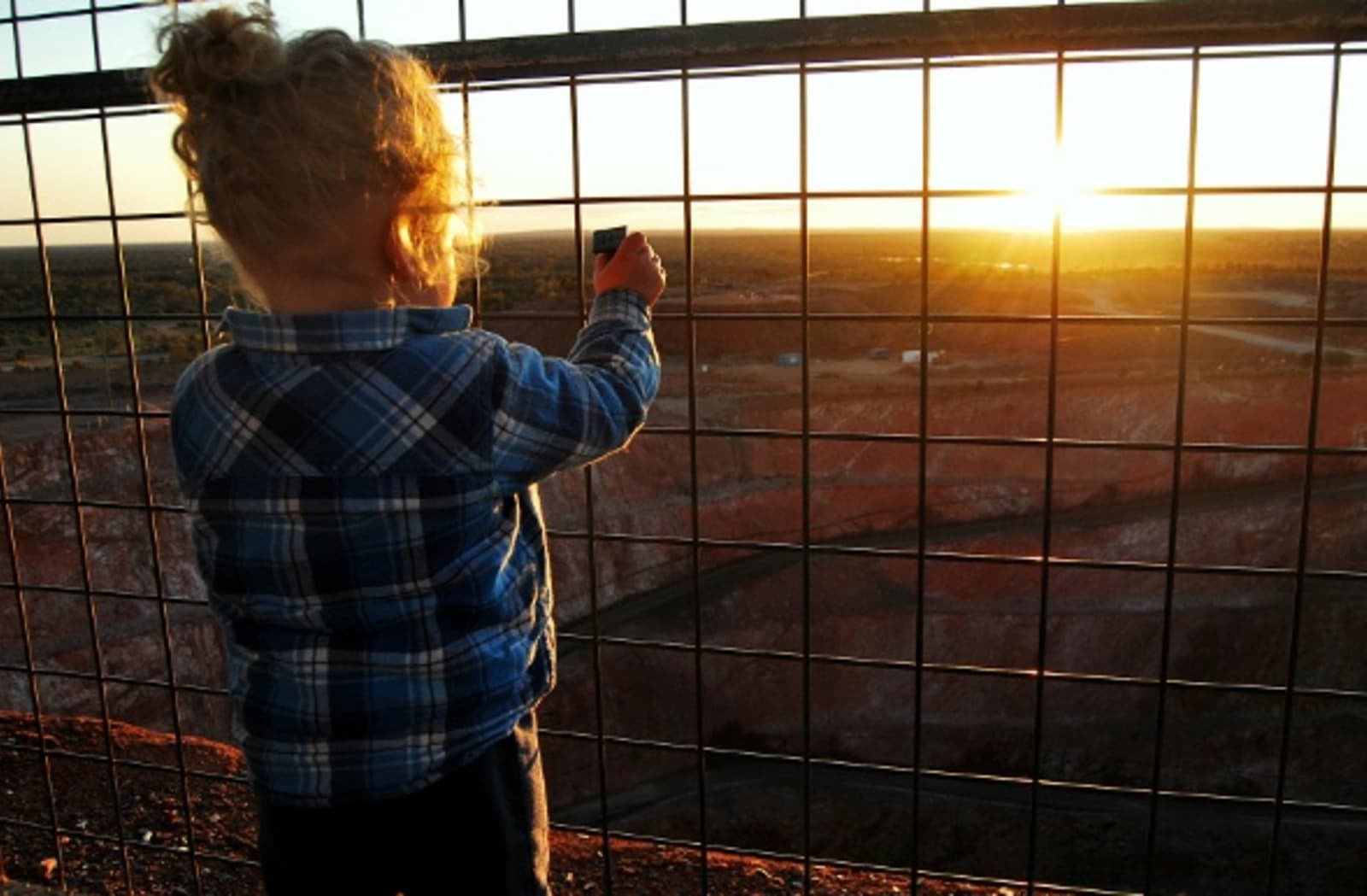


It’s all been a whirlwind; in just under a week we’ve seen a great deal and the changes in our surroundings have been immense, all within a single corner of this admittedly large state. We look down as a huge (but tiny) truck meanders up to the exit, laden with ore from which gold bullion will be produced.
Then there’s another beautiful golden sunset across the flat plains, still stretching as far as the eye can see.
Visit your local Flight Centre store or call 131 600 for more advice and the latest deals on travelling to Outback New South Wales.
This article originally appeared on guardian.co.uk
This article was written by Bill Code from The Guardian and was legally licensed through the NewsCred publisher network.![]()

